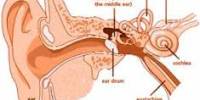Immune cell groups that had previously gone unstudied in development and adulthood have been mapped across multiple organs, providing fresh insights into how our immune system works.
The Wellcome Sanger Institute, the University of Cambridge, and partners have published two new studies that provide open-access atlases of immune cells in the human body. One study focuses on the immune system’s early development and the distribution of immune cells throughout multiple tissues.
The other study examines immune cells in a variety of organs from adults, giving a framework for cell type identity prediction and insights into immunological memory.
These research projects are part of the multinational Human Cell Atlas (HCA) collaboration, which aims to map every cell type in the human body as a foundation for better understanding human health as well as diagnosing, monitoring, and treating disease. HCA is an open, scientist-led consortium that brings together researchers, institutes, and funders from all over the world, with over 2,300 members from 83 countries.
Both findings, which were published in Science today (12 May 2022), look at the similarities and differences of immune cells in different tissues, which have been understudied compared to those circulating in the blood.
Knowing more about immune cell features and behaviors in these tissues at different periods of life could aid future research into vaccines and anti-cancer medicines that attempt to induce or strengthen an immunological response to fight illness.
These are two of four significant research published this week in Science that resulted in the creation of comprehensive and freely available cross-tissue cell atlases. The complementing investigations will contribute to a single Human Cell Atlas and give light on health and illness.
The human immune system is made up of a variety of cells found throughout the body, all of which serve important roles. They don’t just combat pathogens when they show up; they also remember them so they can be eradicated in the future.
The Wellcome Sanger Institute and partners generated an atlas of the developing human immune system across nine organs in the first study. They used single-cell RNA sequencing and spatial transcriptomics to map the exact location of particular cells within growing tissues.
Researchers discovered a novel form of B cell as well as different T cells that develop in the first few years of life. The researchers used data from another Human Cell Atlas study to show that these immune cells don’t exist in adults.
We have created a catalogue of immune cells within the adult human body, allowing us to automatically identify cell types across multiple tissues. By using single-cell sequencing data we have been able to reveal around a hundred different kinds of immune cells including macrophages, B cells, and T cells, uncovering crucial information about how the immune system works. We would like to thank the donors and their families for making this research possible.
Dr. Cecilia Domínguez Conde
Professor Muzlifah Hannifa, a senior author on the first study from Wellcome Sanger Institute and Newcastle University said: “This comprehensive atlas of human immune development reveals tissues involved in the formation of blood and immune cells, enhancing our understanding of immune and blood disorders.”
“In cooperation with the other studies it enables mapping of the immune system from development to adulthood, revealing cell types that are lost as we grow up. It also helps to inform cell engineering and regenerative medicine research.”
In the second study, researchers from the Wellcome Sanger Institute at the University of Cambridge and its partners looked at immune cells in 16 tissues from 12 adult organ donors at the same time.
To deal with the vast volume and variety of immune cells, the team created CellTypist, a database and algorithm that automatically classifies distinct cell types. They were able to identify roughly 100 different cell types as a result of this.
The researchers built a cross-tissue immune cell atlas using CellTypist and further in-depth analysis, revealing the link between immune cells in one tissue and their counterparts in other tissues.
They discovered commonalities as well as variances in specific immune cell groups, such as macrophages. Some memory T cells, for example, have distinct characteristics depending on the tissue in which they are found.
Dr. Cecilia Domínguez Conde, co-first author of the second study, from the Wellcome Sanger Institute, said:
“We have created a catalogue of immune cells within the adult human body, allowing us to automatically identify cell types across multiple tissues. By using single-cell sequencing data we have been able to reveal around a hundred different kinds of immune cells including macrophages, B cells, and T cells, uncovering crucial information about how the immune system works. We would like to thank the donors and their families for making this research possible.”
Dr. Joanne Jones, co-senior author of the second study, from the University of Cambridge, said:
“In this research, we not only identified distinct types of immune cells, we also found that certain immune cell types follow specific tissue distribution patterns. Understanding the varying behaviours of the same type of immune cell in multiple areas of the body can help inform research into disease and how treatments that target these cells might impact other tissues.”
These cross-tissue immune cell atlases are open to the public for use in interpreting and informing future research. A full cell atlas could be used to discover which immune cells are beneficial to stimulate when developing new medicines for infectious diseases and solid tumors that focus on guiding or supporting the immune system, such as vaccination and immunotherapies.
Dr. Sarah Teichmann, co-senior author on both studies from the Wellcome Sanger Institute, and co-founder of the Human Cell Atlas, said:
“Our multi-tissue immune cell atlases are a step towards understanding how the immune system functions throughout the entire body at different stages of life and are an important contribution towards the Human Cell Atlas. A detailed understanding of cells through the Human Cell Atlas will help explain many aspects of human health and disease.”
“In addition to creating a new resource for researchers to classify different cell types, our work will have many translational implications, including serving as a framework for developing therapies to fight immune-related diseases and managing infections.”
















